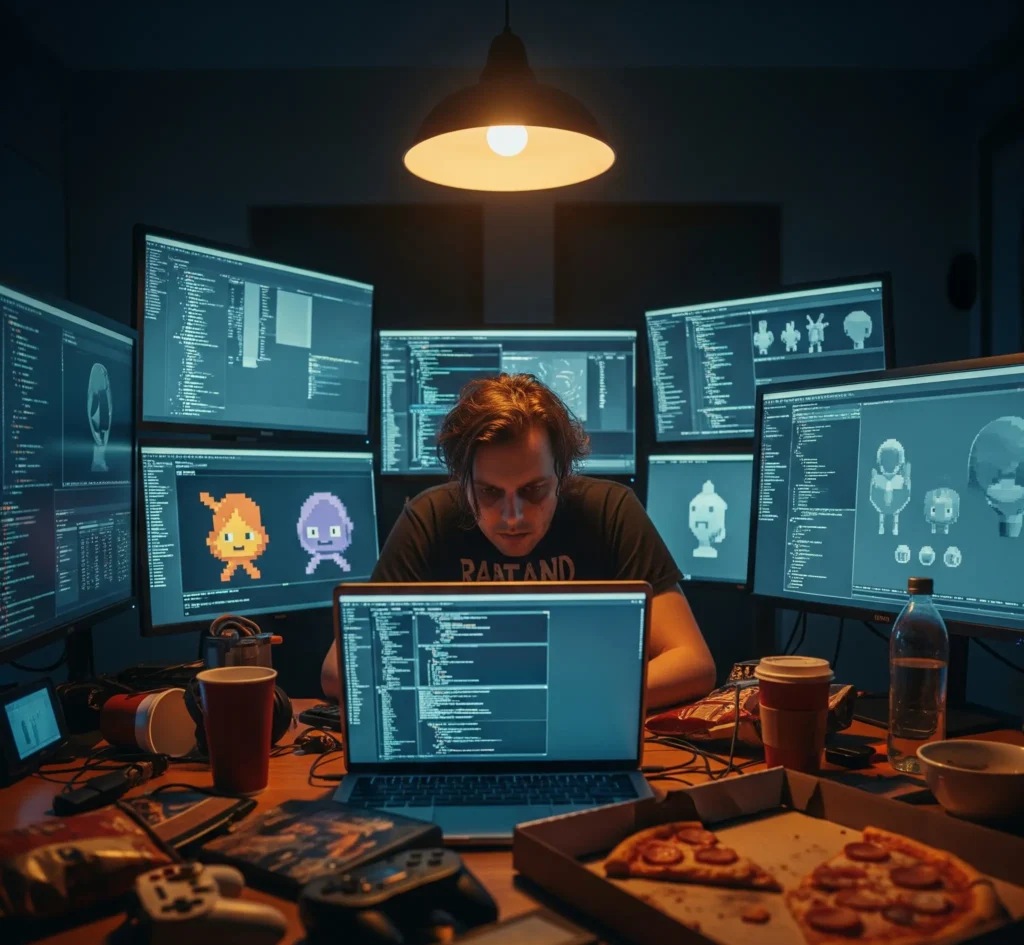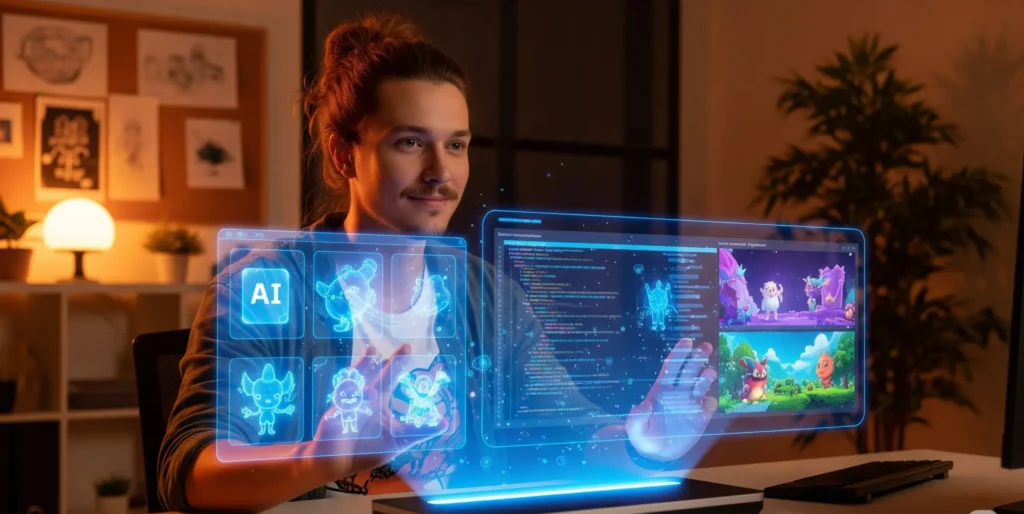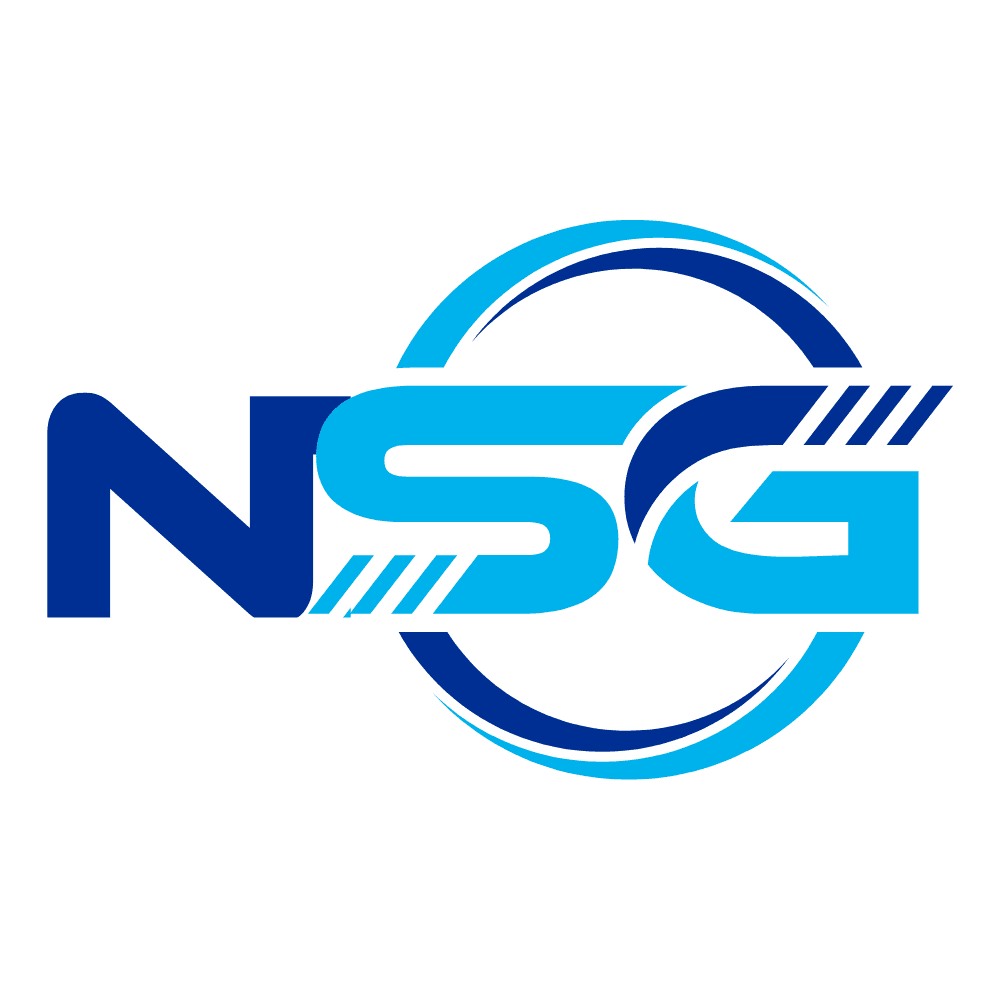That electric spark. The moment a new game idea, fully formed and brilliant, ignites in your mind. The thrill of seeing your vision come to life, pixel by pixel, line by line. It’s what you live for. But then, the crushing weight of reality sets in.
The grind.
The endless hours spent generating repetitive rock textures, the painstaking process of animating every single character movement, the constant, soul-draining bug hunts. This is where dreams often go to die for indie developers—strangled by a lack of time, money, and manpower.
My friend, Priyam, a brilliant indie dev with a mind full of amazing concepts, was at this very breaking point just a few months ago. “I spend more time generating variations of a rock texture than actually designing levels,” he confessed one evening, looking utterly drained. “It kills the joy. I feel like a glorified data entry clerk instead of a game designer.”
I saw the passion dimming in his eyes, replaced by a quiet frustration. He had grand visions, but limited time and an even more limited budget. The traditional path of game development, for a solo creator or a small indie studio, can feel like an impossible climb.
That’s when an idea clicked. “Priyam,” I suggested, “what if you could offload those repetitive, soul-crushing tasks to an intelligent assistant? What if you could use AI tools for indie game development?”
He was skeptical. “AI? Isn’t that just for massive AAA studios with unlimited budgets, or for churning out ‘slop’?” His concern was valid, but I knew the landscape was changing. This isn’t about AI replacing the heart and soul of your game; it’s about giving you back the time and energy to pour even more of your unique genius into it. This is about turning the grind into a catalyst for creation.
Let me show you how Priyam started building smarter, not just harder.
Priyam’s Biggest Headaches (The “Before AI” Dev Grind)

Before he embraced AI, Priyam’s daily life as an indie dev was a cycle of familiar frustrations that led straight to burnout:
- Code Monotony: Writing boilerplate code or debugging endless syntax errors felt like an uncreative chore. It was necessary, but it stole precious hours from actually building cool mechanics.
- Asset Creation Bottleneck: Need variations of a tree, different armor sets, or unique prop textures? Manually creating or even finding suitable assets was a massive time sink. His artistic vision was always bigger than his art budget.
- Animation Agony: Making characters move realistically, designing fluid combat animations, or rigging models was incredibly time-consuming and often required specialized skills he didn’t have. Animating a single walk cycle could take days.
- Sound & Music Scarcity: Finding royalty-free music that perfectly fit his game’s mood, or generating unique sound effects for every action, was a constant struggle. His audio library was tiny and generic.
- The Testing Treadmill: Identifying obscure bugs, repetitive playtesting for balance, or figuring out player behavior was a tedious and endless task. It was like looking for a needle in a haystack, blindfolded.
AI Tools Transformed Priyam’s Workflow
Watching Priyam adopt these tools was inspiring. It wasn’t about cutting corners; it was about amplifying his capabilities. Here’s what I saw AI enable him to do:
- Coding at Lightspeed: “I still write the core logic, but for helper functions, data parsers, or even just debugging complex errors, ChatGPT became my co-pilot,” Priyam explained. “It instantly suggests code, explains snippets, or refactors messy sections. It’s like having a senior dev constantly reviewing my work.” This dramatically reduced his coding time and frustration.
- Infinite Artistic Possibilities: He showed me how he could generate dozens of unique texture maps, character portraits, or environmental props using Midjourney or Meshy AI from simple text prompts. “My art assets used to be my biggest bottleneck,” he shared. “Now, I can iterate on ideas visually in minutes, not days. My game’s visual variety has exploded.” The Meshy AI blog highlights how their tools specifically empower indie devs.
- Animation, Simplified: “I thought animation was beyond me,” Priyam confessed. “But tools like DeepMotion allowed me to upload basic character models and generate realistic movements from simple descriptions or even video inputs. It’s not perfect, but it gives me a solid base to refine, saving hours of manual keyframing.”
- Custom Soundscapes & Music: No more generic stock music. “With ElevenLabs for voiceovers or Suno AI for music, I can generate unique, mood-setting tracks and character voices that perfectly fit my game’s aesthetic,” Priyam said excitedly. “It makes the game feel so much more polished, even on an indie budget.” A recent study by Zenodo even explores how AI-generated voice acting can transform narrative design for indie games, circumventing the substantial costs and timelines of traditional methods.
- Smarter Testing, Faster Iteration: Priyam is exploring solutions like modl:test that can intelligently play through his game, identifying bugs and balance issues far faster than manual playtesting. “It means I find critical issues before my players do,” he noted. Modl.ai is a leader in this space, offering AI for game testing and play. A report from GameDev.net showed that AI-based testing tools can reduce testing time by as much as 70%.
This transformation wasn’t about replacing Priyam’s talent; it was about augmenting it. It was about allowing him to be the brilliant game designer he truly is, unburdened by repetitive tasks.
“AI tools fundamentally rewrite the equation of who can make games. When a creative person can simply describe what they want a game to do and receive working code in return, the technical barriers to entry collapse.” – Sam Liberty, Medium
Priyam’s Top Picks: Essential AI Tools for Indie Devs
Based on Priyam’s hands-on experience and what’s making waves in the indie dev community, here are the AI tools that are genuinely making a difference.
| Category | Tool Examples | Key Benefit for Indie Devs | Why It’s a Game-Changer |
| Code & Scripting | ChatGPT, Google Gemini, GitHub Copilot | Generates, debugs, and refactors code. | Acts as an infinitely patient co-pilot, dramatically reducing coding time and frustration. |
| Art & Assets | Midjourney, Stable Diffusion, Meshy AI, Scenario | Creates textures, 2D art, and 3D models from text prompts. | Saves weeks of manual asset creation, allowing for rapid visual prototyping and endless artistic variation. If you’re curious about my own experience with these tools, check out My Personal Journey to Finding the Best AI Image Generators. |
| Animation | DeepMotion, Cascadeur | Generates realistic character movements from video or text. | Overcomes the huge hurdle of manual animation, providing a solid foundation for polished movement. |
| Sound & Music | ElevenLabs, Suno AI, AIVA | Creates unique voiceovers, sound effects, and musical scores. | Drastically improves a game’s audio quality and atmosphere on an indie budget. |
| Testing & Design | modl:test, Ludo.ai | Automates bug detection, assesses balance, and provides design insights. | Finds critical issues faster than manual playtesting and helps refine game concepts with data. |
Why Your Creativity is Still the Ultimate Engine
After seeing AI’s impact, the question always comes up: “Will AI kill indie game development? Will it make us obsolete?” Both Priyam and I firmly believe the answer is a resounding NO.

AI is not here to replace the unique spark, the passion, the storytelling, or the intricate design decisions that make your game special. What AI does is take away the repetitive, grunt work. It handles the procedural, so you can focus on the creative.
- Your Vision is Unique: AI can generate assets, but it can’t craft the compelling narrative, the innovative gameplay loop, or the emotional core that only your vision can bring.
- Your Design Choices are Crucial: AI can suggest, but you are the architect. You decide what feels fun, balanced, and unique.
- Your Artistic Direction Matters: AI generates, but you curate. You decide which art style, soundscape, or animation best serves your game’s identity.
A recent study by Coursera and DigitalDefynd highlighted that 96% of studios now use AI tools in some capacity, and that AI can cut game testing time by up to 50%. This isn’t a future trend; it’s the current reality for efficient development.
FAQs (Frequently Asked Questions)
Is using AI for game development considered “cheating” or does it devalue my work?
Absolutely not! 🙅♀️ This is a common misconception, but AI is simply a tool. Think of it like a game engine (Unity, Unreal) or a digital art program (Photoshop). These tools don’t create the game for you; they empower you to build it more efficiently. Your unique vision, creative decisions, and design choices are the true heart of the game—AI just frees you from the mundane tasks so you can focus on what really matters. It’s about working smarter, not harder, to bring your authentic vision to life.
Can AI help me with the creative parts of my game, not just the technical stuff?
Yes, definitely! While AI excels at repetitive tasks, it’s also a powerful brainstorming partner. You can use it to generate dozens of unique character concepts, plot twists, level design ideas, or even suggest color palettes and musical themes that fit your game’s mood. It’s a fantastic way to break through creative blocks and explore ideas you might not have considered on your own. AI doesn’t replace your creativity; it amplifies it.
What are the biggest risks or downsides of using AI in my indie projects?
There are a few key things to be mindful of. First, over-relying on AI can stifle your own skills. It’s important to understand the fundamentals of what the AI is doing so you can refine its output. Second, there are legal and ethical considerations, especially with generative AI and copyrighted material. Always check the terms of service for any AI tool and be cautious about using AI-generated content commercially without clear rights. Finally, AI tools can be a crutch; they’re best used to speed up your workflow, not to avoid learning the core skills entirely.
How do I get started with AI tools if I have a very limited budget?
You don’t need a huge budget to get started! Many powerful AI tools offer generous free tiers or affordable subscription plans. For coding assistance, a free LLM like ChatGPT or Google Gemini is a great starting point. For art, tools like Stable Diffusion can be run for free. Even platforms like Midjourney and Meshy AI have free trials that allow you to experiment with asset generation. The goal is to start small, find one tool that addresses your biggest bottleneck, and see how it fits into your workflow before you commit to any spending.
Will my game stand out if everyone is using the same AI tools?
This is a fantastic question! The magic isn’t in the tool itself, but in how you use it. 💡 Every indie dev has a unique voice and creative perspective. Your game will stand out because of your curated vision, the narrative you craft, the unique mechanics you design, and the way you refine and integrate AI-generated content. Two developers using the same AI art tool will produce completely different results because their prompts, artistic direction, and storytelling are unique. Your vision remains the ultimate differentiator.
Your Indie Dev Dream, Re-Ignited.
Priyam’s journey taught me that embracing AI isn’t about compromising your artistic integrity; it’s about safeguarding your time, energy, and mental well-being. It’s about empowering you to stay in the game, literally and figuratively.
If you’re an indie dev feeling overwhelmed, constrained by resources, or just plain tired of the grind, take inspiration from Priyam. Explore one of these tools. Start small. See how AI can handle the mundane, so you can focus on the magnificent. Your next great game, and a healthier, happier you, are waiting.
What’s the most time-consuming, repetitive task in your game development process? Share it in the comments below – let’s discuss how AI might be your secret weapon!
Disclaimer: This article shares insights from personal experiences and industry observations regarding AI tools for game development. While these tools can be powerful, results may vary. We do not guarantee specific outcomes or performance from their use. Always verify information and tool suitability for your own projects.
